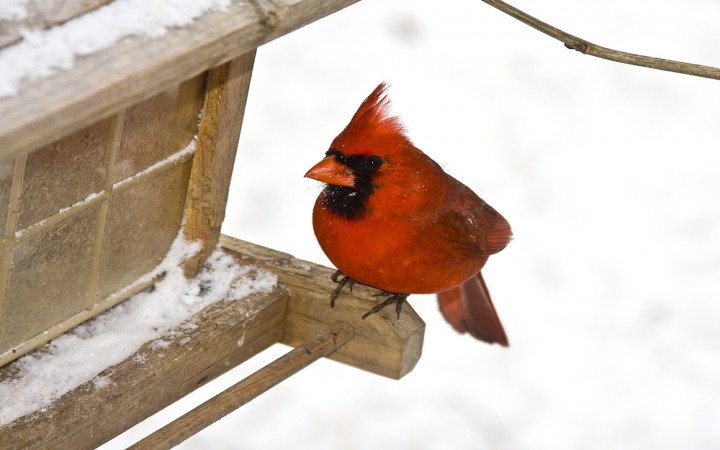Today’s Wonder of the Day was inspired by Bryce from Shawano, WI. Bryce Wonders, “Why do birds fly south for the winter?” Thanks for WONDERing with us, Bryce!
While many people think most, if not all, birds fly south in the winter, all you have to do is take a look around to see that many of our feathered friends stick around through even the coldest months. Whether a particular type of bird flies south for the winter depends mainly on one thing: what type of food it eats.
In areas that have cold winters, some common bird foods, such as nectar and insects, may not be available year-round. Birds that eat those foods must fly south to find food to survive. Other birds that eat seeds or bugs that live under tree often hang around, since they can continue to find food all winter long.
While some birds instinctively migrate at certain times of the year, scientists believe birds won't fly south without specific environmental cues, the reason being lack of food. As long as food remains available, some birds will delay migration or won't leave at all.
In fact, some experts believe the widespread use of bird feeders may allow some species of birds to stop migrating and become year-round residents.
The National Bird-Feeding Society sponsors National Bird-Feeding Month every February. Why February? It's one of the most difficult months in the United States for wild birds to survive.
Throughout February, the society encourages people to provide food, water, and shelter to help wild birds survive.
No matter where you live, there are always birds that you can feed. Many families have learned that backyard bird-feeding can become a fun, educational, and inexpensive hobby.
Adults find watching birds to be relaxing and peaceful. Kids enjoy learning about different types of birds and what they eat.
Feeding wild birds in the backyard can be as simple as mounting a basic feeder outside a window and filling it with birdseed mix. Common birdseed blends usually contain a mixture of nine major seed types: black-oil sunflower, cracked corn, sunflower hearts, thistle, striped sunflower, red milo, safflower, white proso millet, and whole peanuts.
Of course, as you learn more about the birds in your area, you can always add additional feeders and experiment with different types of seed to try to attract new birds to your yard.
More than 55 million adults in the United States feed birds around their home, which makes bird-feeding the second most popular hobby in the country after gardening.
Give it a try and you'll soon learn that bird-feeding isn't just for the birds. Your family also benefits by bringing nature's most beautiful sights and sounds to your backyard.




